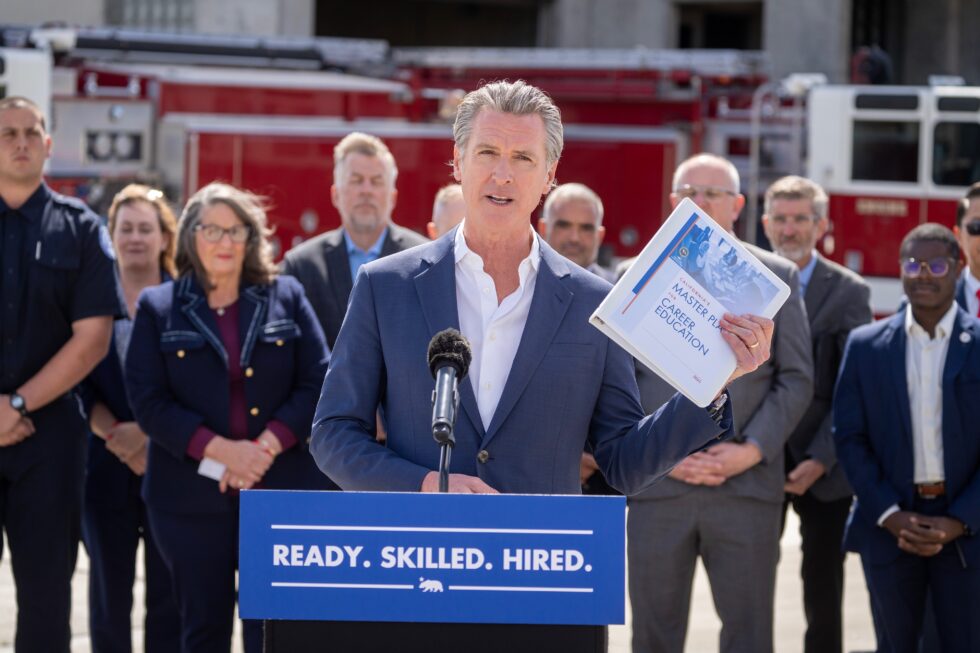Gov. Gavin Newsom has released a new statewide strategy aimed at helping Californians — including those without college degrees — access high-paying, fulfilling careers through improved workforce training, hands-on learning, and recognition of real-world experience.
The Master Plan for Career Education, unveiled Monday at Modesto Junior College, outlines steps to make the state’s education and workforce systems more accessible and better aligned with labor market needs. It emphasizes expanding college credit for prior experience, improving regional coordination, and shifting hiring practices to focus more on skills than academic credentials.
“This plan lays out a clear path to help all Californians — whether just starting out or switching careers — access high-paying, fulfilling jobs, with or without a college degree,” Newsom said during the announcement.
The initiative includes proposals tied to the state’s January budget and builds on the Freedom to Succeed executive order issued by Newsom in 2023.
Credit for experience and digital ‘career passports’
A central focus of the plan is expanding Credit for Prior Learning (CPL), allowing veterans and working adults to turn job and life experience into college credits. State officials estimate CPL could benefit up to 250,000 people, including 30,000 veterans, and reduce time and costs associated with earning a degree or credential.
The plan also calls for the introduction of Career Passports — digital records combining academic transcripts with verified skills from jobs, military service, and training programs. The goal is to help employers identify candidates based on what they can do, rather than only on formal education.
Regional and statewide co-ordination
To ensure efforts are aligned across California, the plan proposes the creation of a statewide collaborative to monitor workforce trends, streamline systems, and reduce duplication in training and education efforts.
At the local level, the state aims to expand partnerships that support paid internships, better funding coordination, and closer engagement with employers to identify in-demand skills and improve job placement outcomes.
Responding to a changing workforce
California’s last major education roadmap — the 1960 Master Plan for Higher Education — was developed for an economy where most jobs required minimal formal training. But with the rise of automation and artificial intelligence, the skills landscape has shifted significantly, state officials said.
The new strategy reflects those changes, aiming to support continuous learning throughout a worker’s career and build systems that are more adaptable to evolving needs. It also seeks to address structural barriers that make it difficult for people — particularly in rural communities — to navigate complex education, training, and public benefit programs.
The plan has been shaped through public-private collaboration, including input from state agencies, community members, and philanthropic organizations. An initial draft was released in December 2023 at Shasta Community College.





